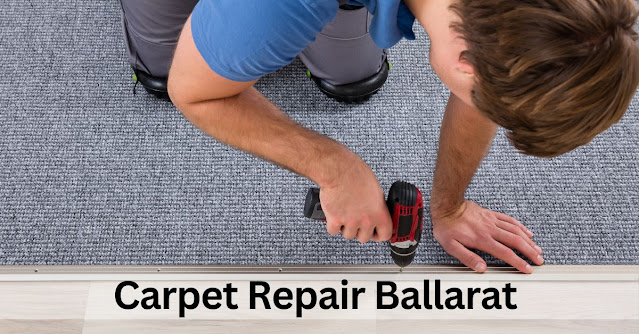The Ultimate Guide to DIY Carpet Repair: Tips and Tricks
- Get link
- X
- Other Apps
Carpets, while enhancing the comfort and aesthetics of our homes, are susceptible to wear and tear. Fortunately, many common carpet repair Frankston issues can be addressed with a do-it-yourself (DIY) approach, saving you money and empowering you to take control of your living space. In this comprehensive guide, we'll provide you with tips and tricks to tackle various carpet problems and master the art of DIY carpet repair.
Assessing the Damage
Thorough Inspection
Before diving into the repair process, conduct a thorough inspection of your carpet. Identify tears, frayed edges, loose seams, or stubborn stains. Understanding the extent of the damage will help you choose the appropriate DIY repair method.
Basic Tools and Materials
Gather Your Toolkit
Invest in a basic toolkit specifically designed for carpet repair. This should include a carpet knife, seam roller, carpet adhesive, extra carpet remnants, and a hot glue gun. These tools will be your allies in addressing a range of common carpet issues.
Repairing Small Tears
Patching Techniques
For small tears or burns, use a patching technique. Cut a small piece of carpet from an inconspicuous area, ensuring it matches the damaged section. Apply carpet adhesive to the damaged area and press the patch firmly into place. Use a seam roller to ensure a smooth and secure bond.
Fixing Frayed Edges
Binding or Serging
Frayed edges are a common issue, especially in high-traffic areas. You can address this by binding or serging the edges. Binding involves attaching a strip of fabric to the frayed edge while serging uses a special sewing machine to create a stitched border. Both methods enhance the durability of the carpet edge.
Dealing with Loose Seams
Re-securing with Adhesive
Loose seams can be unsightly and pose a tripping hazard. To fix this issue, apply carpet adhesive along the edges of the loose seam and press the carpet together. Use a heavy object or book to weigh it down while the adhesive sets, ensuring a secure bond.
Stain Removal Techniques
DIY Stain Removers
Common household items like white vinegar, baking soda, and dish soap can be powerful allies in stain removal. Create a solution of equal parts vinegar and water, or use a mixture of baking soda and water for stubborn stains. Blot the stain gently, working from the outside in, to prevent it from spreading.
Regular Maintenance Tips
Preventive Measures
Prevention is key to minimizing the need for repairs. Implement regular maintenance routines, including vacuuming at least once a week and promptly addressing spills and stains. Rearrange furniture periodically to distribute wear evenly across the carpet.
Conclusion
Mastering the art of DIY carpet repair is not only cost-effective but also empowering. With the right tools, materials, and techniques, you can tackle common carpet issues and extend the life of your flooring. Remember to assess the damage, gather the necessary tools, and follow the specific repair techniques outlined in this guide. By taking a proactive approach to carpet care, you can enjoy a beautiful and well-maintained living space for years to come.
- Get link
- X
- Other Apps



Comments
Post a Comment